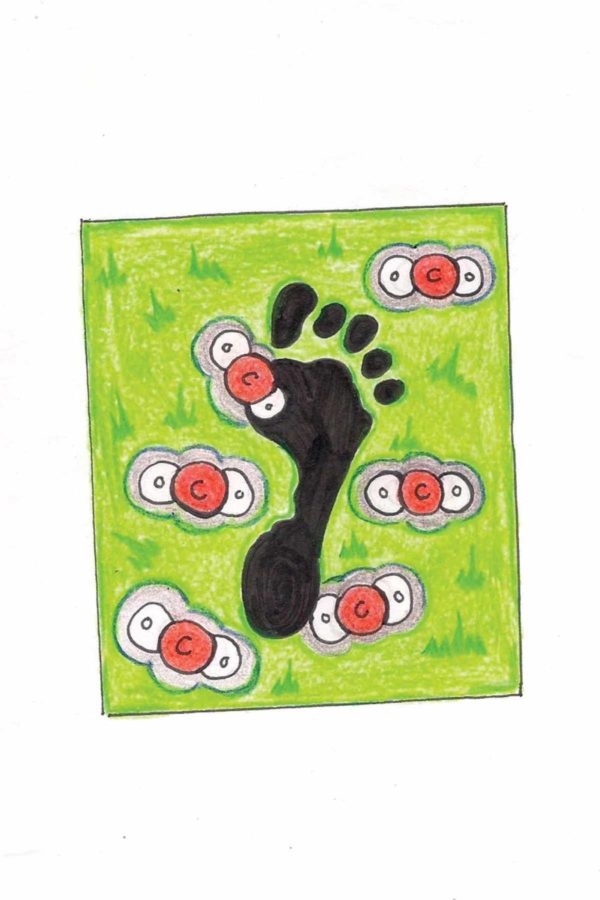Top Ten Ways to Reduce Your Carbon Footprint
April 5, 2019
A “carbon footprint” is defined as the total amount of greenhouse gases produced to, directly and indirectly, support human activities, and each and every person has his or her own, according to an informative, environmental website (timeforchange.org). There are quite a few ways that we can cut down on our footprints. Here are the top ten best ways to reduce your personal carbon footprint!
10.) Waste Less Food – Altogether, Americans throw away about one third of the food they buy. To help get rid of that problem, try buying foods in bulk, plan out your meals for the week, and take advantage of leftovers (fao.org).
9.) Eating Local/Organic Food – Eating locally-produced and organic food will make your heart healthy and happy, as well as help the environment. Try growing your own veggies and fruit. A big chunk of greenhouse gas emissions comes from the transportation and production of food, so reduce that!
8.) Recycle – This may sound obvious, but try to recycle as much as possible. Always check containers or packages to see if they can be recycled.You can always refer back to the three most important R’s: Reduce, reuse, and recycle!
7.) Compost – Don’t throw away your banana peels, apple cores, or any non-animal food scraps — for they can have great use in the future! Compost is organic materials that decay in order to fertilize plants. Making your own compost saves water and allows landfill space to be conserved.
6.) Alternative Driving – Try to reduce driving motor vehicles as much as you can. Instead of driving, take a nice walk, ride a bike, or use public transit. If driving is absolutely necessary in order to get to your destination, consider carpooling. All of these will help reduce those yucky carbon emissions.
5.) Changes in Diet – The production of meat and dairy products produce 60 percent of agriculture’s greenhouse gas emissions. Isn’t that crazy? Cutting red meat and dairy out of your diet (or at least cutting down) would greatly help the environment (theguardian.com).
4.) Conserving Energy – It’s as easy as turning off lights when you’re not using the room or unplugging any appliances that are not in use in your house. Not only will this knock down your electricity bill, but it will also reduce power plant emissions.
3.) Use LED Lights – LED lights use up to 75 percent less energy and last up to 25 times longer than your average Joe Schmoe incandescent lights. But wait, there’s more… only five percent of energy from LED lights are wasted on heat energy. Score! (energy.gov).
2.) Eliminate Everyday Plastic Items – Items like plastic water bottles and plastic straws are devastating to the environment. Consider purchasing reusable water bottles and straws to help cut down on the overuse of everyday plastic materials.
1.) Water Usage – Limiting your use of water is probably one of the biggest steps that you can take to help make a difference in the environment. Check faucets for leaks, make water-efficient choices when using the dishwasher and washing machines, and use climate appropriate plants to help cut back on watering.


